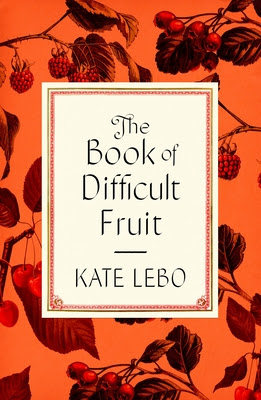Nonfiction November comes to end today and so I am in a swirl of activity trying to finish up reading several books and, if I can manage it, writing reviews for them. The Book of Difficult Fruit was an odd choice for me to make this month. Actually it was an odd choice for me to make any time. I am a fruit lover (who isn't?) but I pretty much stick to what I know and don't branch out much when it comes to fruit selection. Growing up in the Pacific Northwest I'm used to seeing berry bushes everywhere. But because of this abundance I've been warned my whole life not to stick anything in my mouth unless I was absolutely positive it wasn't poisonous. Who knows about those little read berries on the bush in my own backyard. Leave them alone is my motto. It is also not uncommon to see old apple trees with rotten fruit on the ground beneath them. So why should I be drawn to a book about not just any fruit, but difficult fruit? I honestly can't remember why this one ended up on my TBR list. But here I am reviewing it for you after admittedly a not-very-close reading of it.
Kate Lebo is the author of a cookbook, The Pie Book, and several of the fruits in the book are made into pies at the end of her chapters, which makes sense. There are 26 fruits highlighted which conveniently coincide with the letters of the alphabet, starting with Aronia and ending with Zucchini. For each fruit (and some non-fruits) Lebo tells the reader where one can find it, how it is to be gathered, and how it can be used. This includes medicinal purposes, if any exist. If she was able to find historical references to the fruit she included that information, too. Lastly, each chapter ends with two recipes using the fruit. Not all recipes are for food. For example, aronia can be made into a dye for paper or cloth and Yuzu can be used in body oils and balms.
Though I found the information of the different fruits interesting I didn't find it THAT interesting so I would speed read through sections, especially those where obtaining the fruit seemed unlikely or impossible for me.
I hadn't heard of several of the fruits included in the book: aronia, durian, faceclock, medlar, yuzu. As it turns out I had heard of faceclock, I just call it dandelion greens. Those and several of the foods listed are NOT fruits: rhubarb, sugarcane, vanilla, xylitol, and zucchini, but who is being picky. I actually found most of the chapters enlightening and sometimes quite funny.
While Kate Lebo was telling us about her attempts at cooking we also learned a few things about her life and her relationships. With a few more details we could even call this book a memoir.
If you are a foodie or just enjoy reading through cookbooks or learning about new foods, this is the book for you. If you like to experiment with new foods, even if all you do is munch them as you hike, you might find some good ideas in Difficult Fruit. For the rest of you, I'd say try something else, or plan on skimming your way through this one, like I did.
-Anne


Durian is that really smelly fruit, right? I've heard of yuzu also but am not sure why.
ReplyDeleteYes, Durian is apparently VERY stinky.
DeleteThis doesn't sound like the book for me, but I do love interesting and random stories about everyday things so I think I would like bits of it (like vanilla and zuccini)
ReplyDelete